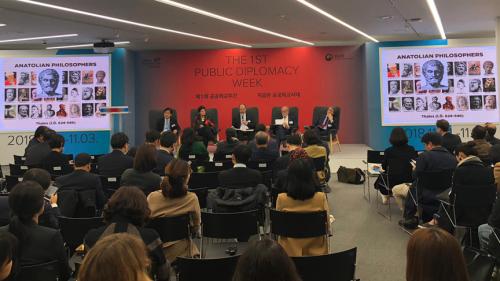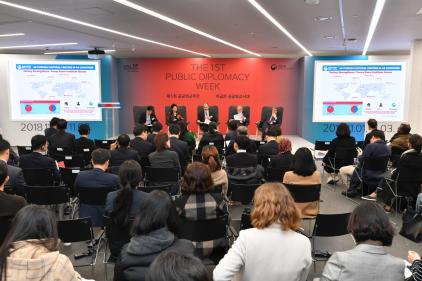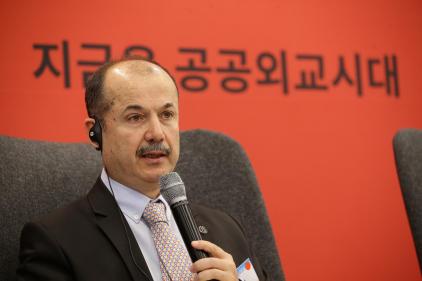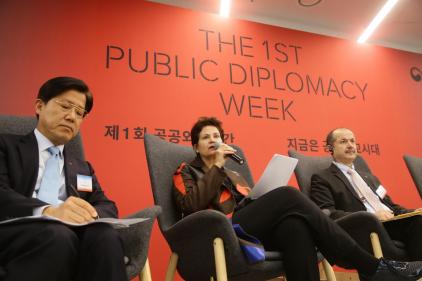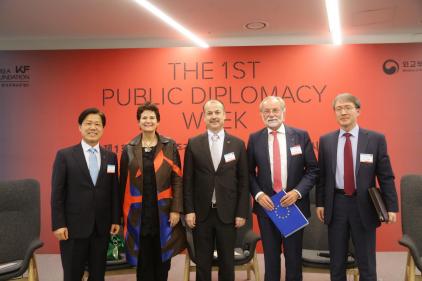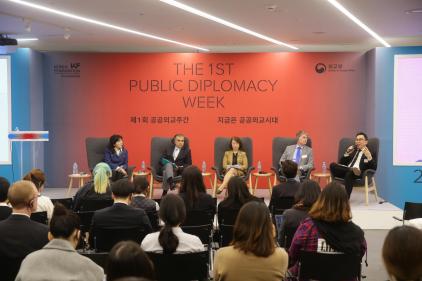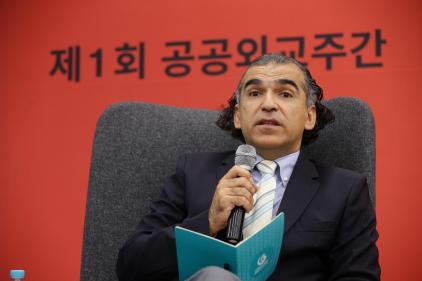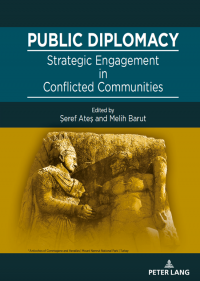Yunus Emre Institute's Significant Contribution to Public Diplomacy Literature
The Public Diplomacy Week served as a gathering place for the world's leading academics, diplomats, bureaucrats, cultural and public diplomacy experts in Seoul, and as part of the event, a special session was held for "Public Diplomacy: Strategic Engagement in Conflicted Communities," a book published by Yunus Emre Institute Cultural Diplomacy Academy.
Yunus Emre Institute President Prof. Dr. Şeref Ateş and Dr. Nancy Show, a leading figure in the field of public diplomacy, delivered speeches during the panel held specifically for the Asia launch of the book.
Anatolian wisdom for public diplomacy
Yunus Emre Institute President Prof. Dr. Şeref Ateş delivered a speech at the first general session of the 1st Public Diplomacy Week, organized by the Korea Foundation between November 1-3, 2018 in Seoul. In his speech, he talked about the Mathematics Truck Project, which came to fruition by interpreting the public diplomacy concept within the context of the Anatolian wisdom.
"In international relations, the public or cultural diplomacy is used as a tool by prioritizing the interests of the State in question. This usually results in lack of credibility. The Turkish-style public diplomacy has originated from the Anatolian wisdom. In our country, practice is judged by the intention. No one can know the real intention or purpose of other people. So in principle, we prioritize and, care about, other people just because they are human beings. This is what makes us different from others. This intention influences the outcome and output. This is because we do not do them for a show of force. We see the target audience as our sisters and brothers of humanity. If we have positive examples concerning, or contribution to, the world and life, we share them with humanity for the sake of our common future," he said.
Ateş noted that there were currently 3.58 million Syrians in Turkey. "We do not see these figures as mere statistical data. Rather, we believe that all sorts of resources that rely on the Anatolian wisdom and that are human-centered, particularly including the science diplomacy, prove to be considerably effective tools of interaction. This is the approach adopted by Yunus Emre Institute. With the Mathematics Truck Project, developed by our Institute, we managed to interact with the Syrian children in our country via the language of science. The project made it possible for us to use the science diplomacy for communicating with 60,000 Syrian children who were traumatized by war and conflict and who were living in 12 temporary sheltering centers in Turkey. We used a special psychosocial support program for helping these kids recover from trauma and prepare them for communication," he said.
Following the general session, the Asia launch of the book, "Public Diplomacy: Strategic Engagement in Conflicted Communities," edited by Prof. Dr. Şeref Ateş and Dr. Melih Barut, was performed with broad participation under the auspices of the Korea Foundation.
During the event, Prof. Dr. Şeref Ateş and Dr. Melih Barut made a presentation about the prevention of conflicts through public diplomacy with emphasis on strategic engagement in conflicted communities.
Public Diplomacy: Strategic Engagement in Conflicted Communities
The book, "Public Diplomacy: Strategic Engagement in Conflicted Communities," edited by Yunus Emre Institute President Prof. Dr. Şeref Ateş and Cultural Diplomacy Academy Coordinator Dr. Melih Barut, comprises the academic papers presented at the international conference "Role of Public Diplomacy in Bringing Together Conflicted Communities" and the panel "Future of Public Diplomacy," organized last year in Istanbul by Yunus Emre Institute Cultural Diplomacy Academy as the main coordinator, within the framework of the Global Public Diplomacy Network, and with the participation of academics from the world's leading universities and distinguished experts in the field.
The book discusses diverse public diplomacy topics including alternative diplomacy initiatives for keeping together the conflicted or potentially conflicted communities in the Middle East and the Balkans launched by Turkey as a country located geopolitically and geostrategically at the very center of regional and global conflicts, methods for employing traditional diplomacy, the role of the conventional media in shaping the perceptions, the use of social media in public diplomacy, the definition of target audience in public diplomacy, the shaping of behaviors, etc. from various perspectives.
With its cover page that features the photo of the relief showing Antiochus I of Commagene, shaking hands with Heracles, in Mount Nemrut, the book seeks to promote the traces of Anatolia and Anatolian culture as a means of cultural diplomacy in the international arena.

